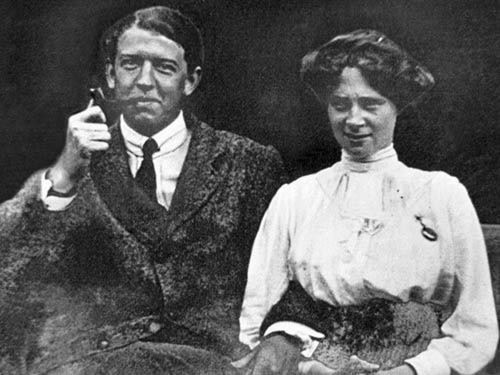One Book Whonnock is a community program that invites people in east Maple Ridge to read and discuss the same book.
Jean Davidson is the heart and soul of this program, which she started three years ago with the support of the Whonnock Community Association. Her efforts made neighbours talk to neighbours – not a small achievement in these rural parts of Maple Ridge.
The book now being read is the 1994 edited version of The Eternal Forest, by George Godwin. This book, first published in 1929 in London and New York, is set before the First World War. It focuses on a small community called Ferguson’s Landing on the Fraser River before the War. The author seems to reveal the true identity of the place by letting the chorus of frogs sing: “Wan-ik, Wan-ik.”
Whonnock is where, in 1912, the author and his wife, Dorothy Purdon – just married and both fresh from England – settled on acreage off today’s 268th Street.
George was not cut out for life as a “bushranger,” and Dorothy just hated the place. A year or so later, after the birth of their first child, the couple moved to a more urban home on Spilsbury Street, close to the railway station and other amenities, before returning for good to England in 1915.
The Newcomer, Godwin’s double in the novel, is as naively enthusiastic as the author himself must have been. He wants to be together with his wife “ ... undisturbed, encircled by the bush, alone.” He does not give up, but keeps on trying to scratch a living from the soil until his health forces him to put the property up for sale.
The Newcomers – as the Godwins – see themselves a notch above the others in the settlement. She chooses not to befriend the women of the community and prefers to get her practical knowledge from books. He judges his neighbours harshly, but he shares local gossip and discusses news and ideas with them and learns from them how to develop his land and work in the woods.
Robert S. Thomson, the editor and publisher of the 1994 version of the book, stressed the historical significance of it, but reading historical facts into these stories is perilous. This book, after all, is a novel, where fiction is inspired by reality.
It is tempting, for instance, to take the story in the prologue of the founding of the place in 1849 by a Scots master-mariner called Captain Ferguson at face value. But the true first white settler in Whonnock was Robert Robertson, who started living here in 1860, and he does not figure in Godwin’s book in any way.
Recognizing residents of Whonnock among those of Ferguson’s Landing’s is an interesting but rather disappointing exercise. Similarities between Godwin’s creations and real people are only superficial and his portrayals, often unflattering and derogatory, even vindictive, are obviously coloured by imagination.
The book does shows the blatant racism and sexism so common at this time. Godwin tells us about swindlers and ruthless speculators ruining the lives of the common men. He admires and pays tribute to the true farmer, fisherman and woodsman, whose existence is threatened by the seemingly unstoppable flow of Japanese and Chinese immigrants,
Above all else, Godwin glorifies the invincible eternal forest. He would go on dreaming of trees, the forest and Canada for the rest of his life.
Fred Braches is a local historian who lives in Whonnock.
